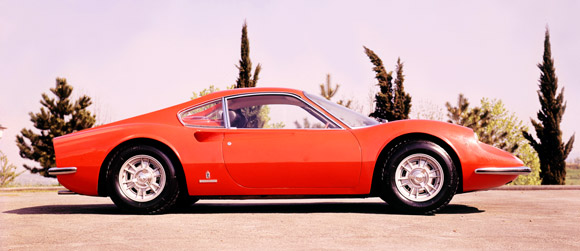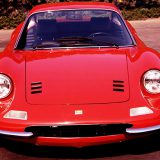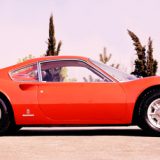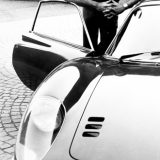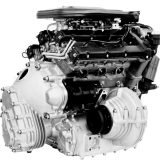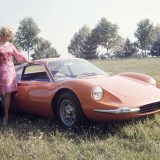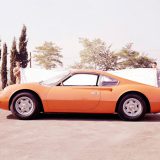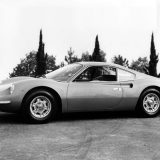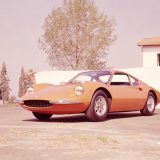| status : | For-sale |
|---|---|
| price : | $395,000 |
| mileage : | 5,000 |
| exterior color : | Dino Rosso |
| interior color : | Tan |
| vin # : | 1234 |
| chassis # : | 1234 |
| engine # : | 1234 |
| gearbox # : | 1234 |
For Ferrari it was becoming imperative to increase sales and reduce production costs. With the prototype of the Dino 196 S already in-house, there was an excellent opportunity to design a relatively small displacement, road-going version which, for the first time in Ferrari history, could be built on an assembly line. Pininfarina came up with pretty, classic lines and the Fiat V6 was developed by Ferrari and engineered for transverse mounting amidships.
The model met some resistance amongst purists to begin with as it was not considered a ‘real’ Ferrari, but opinions soon changed once clients got the chance to see it close up and drive it. The small-engined Ferrari (relative to other models in the range at the time) came about due to regulations in Formula 2 monoposto racing for 1967, requiring that engines in racing cars had to be production-based, and produced in quantities of no fewer than 500 units a year.
THE STORY
At the time, Ferrari could not hope to build that number of suitable units, so to enable them to compete, an alliance was forged with Fiat. Fiat would manufacture the engines and fit them into an upper market range of front-engined cars of their own, using the Dino name, and also supply engines to Ferrari for their own use. All models, whether Fiat or Ferrari, would use the ‘Dino’ script badge.
The Dino name was first used on Ferrari cars with vee engines in the late fifties, on Formula 1 and sports-racing models. It was the Christian name of the son of Enzo Ferrari, who had died in 1956, and was used in his memory as he was working on a vee-engine project prior to his death. It continued to be used to designate any model with a vee engine throughout the early sixties, and then again in 1965 on the 166P mid-engined sports-racing model, which evolved into the 206 SP and 206 S sports-racing models. This was the first model to carry a Dino badge on the nose instead of a Ferrari one. The badge was a horizontal rectangle with his stylised script signature in blue on a yellow background.
Later in 1965, at the Paris Salon, a mid-engined prototype was shown on the Pininfarina stand, called the ‘Dino 206 GT Speciale’, which was a design study for a road car, based on the chassis of a sports-racing model, with an in-line, mid-engined placement. It featured headlights under a clear perspex cover that extended the full width of the nose, but otherwise the shape was essentially that which would develop into the production road car. The cabin featured a shallow, vertical concave curved rear screen between sail panel buttresses that ran into a Kamm tail.
The prototype carried strong influences from the sports racing model, and the larger-engined Ferrari 412P, and 330 P4 sports-racers. This was particularly evident in the shape of the nose, with bulbous wings rolling down into a low front lid line, and the cabin sail panels sweeping down into a Kamm tail.
| Tags : | Berlinetta, Fiat, Pininfarina |
|---|---|
| Make : | Ferrari |
| Color : | Orange |
| Year : | 1967 |
| Engine : | V6 |
| Transmission : | 5-speed |
| Body-Chassis : | Two-door |
| Configuration : | Left hand drive |
